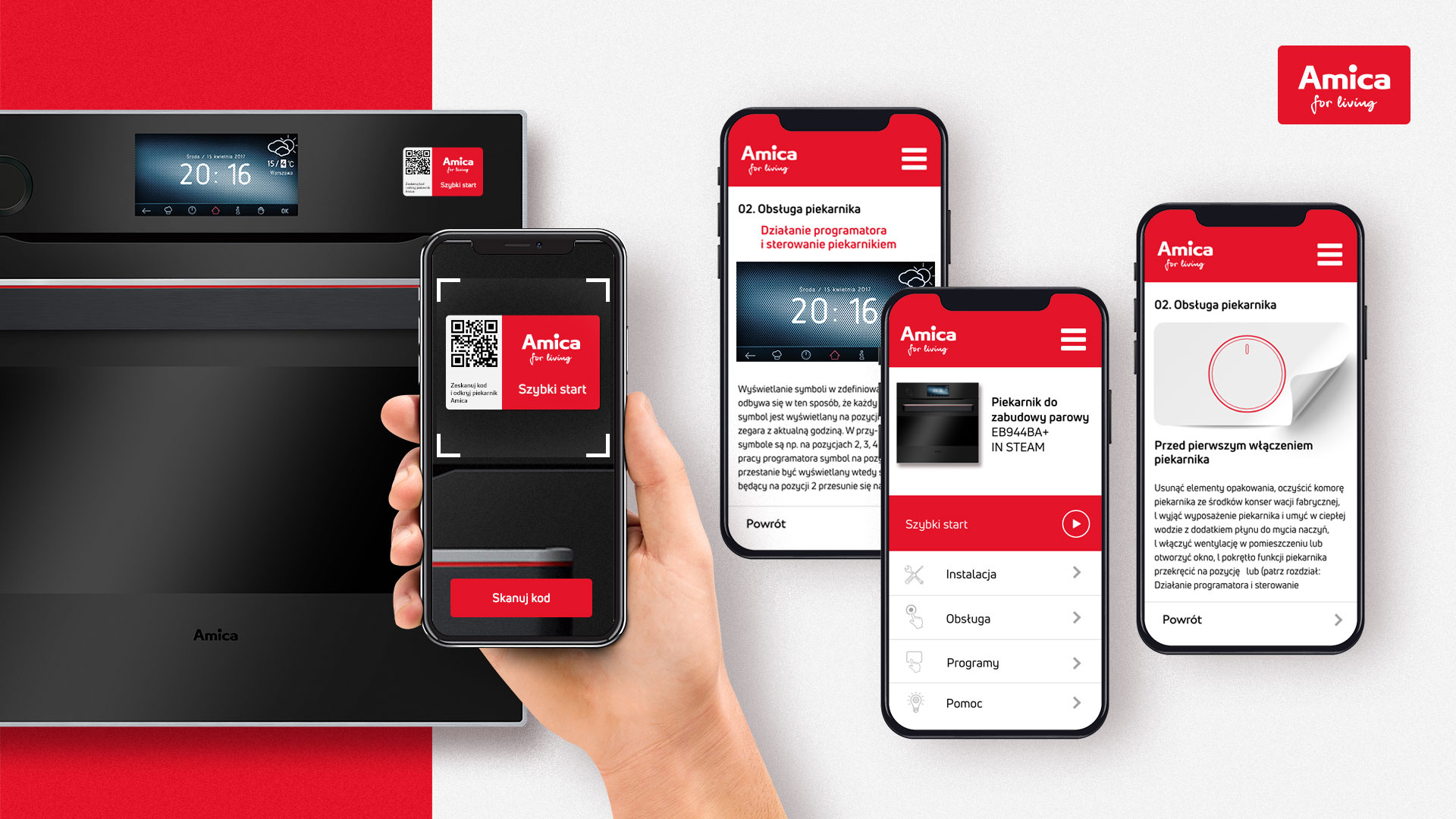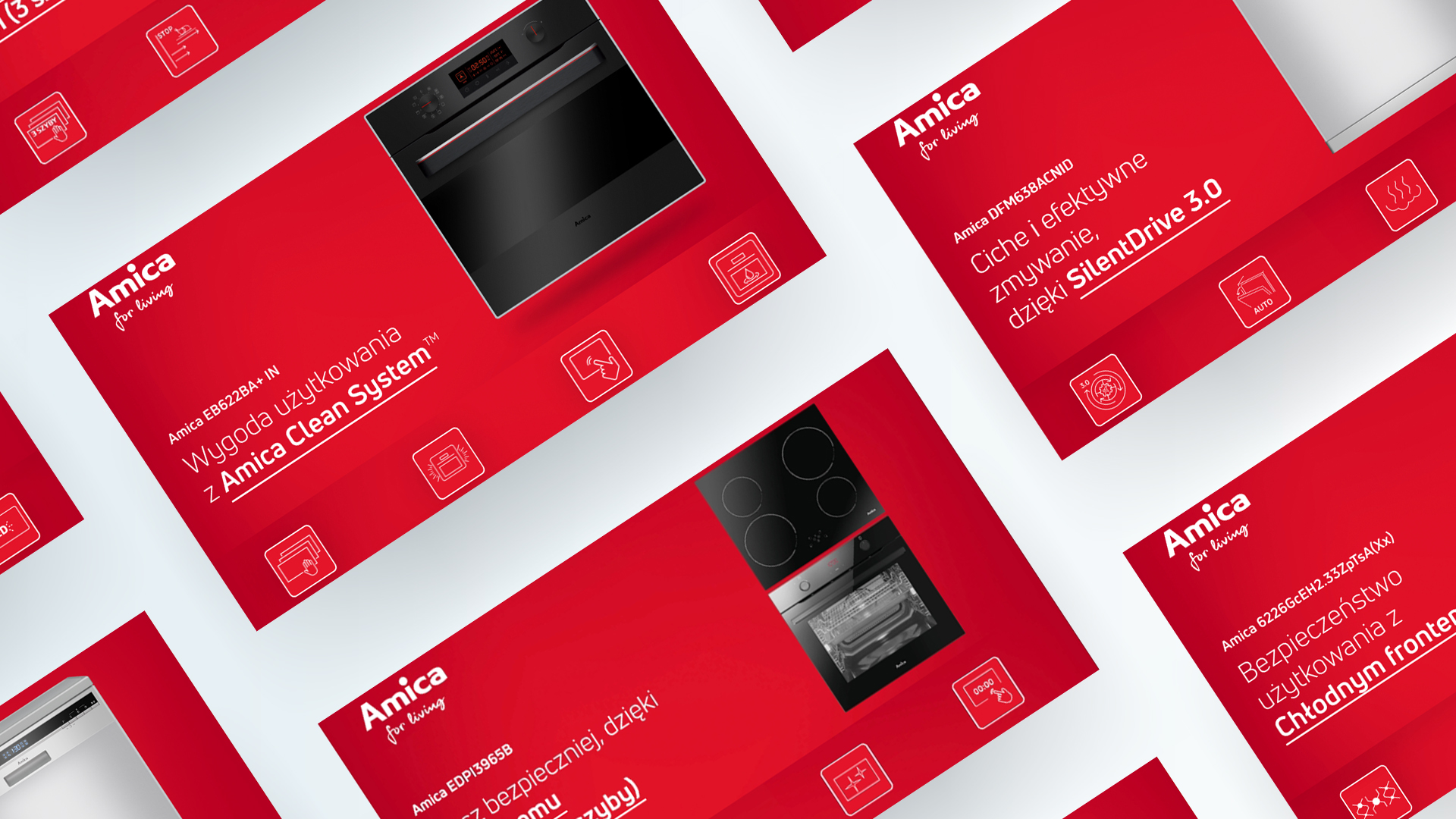Retail & Electronics
In the retail & electronics industry, we have pioneered the development of attractive and personalized forms of content presentation, resulting in positive product perception and increased decision-making among brand customers.
Pioneering rich-content project for e-commerce
Effective product communication at the point of contact with consumers that outpaced the competition and set a new standard for product card design in the market.
- More than 30,000 product cards.
- 11 product categories.
- 15 e-commerce platforms of the largest e-retailers in Poland.
- Proprietary shoplify.co.uk tool for greater selection and freedom of card modules.
- Effectiveness confirmed by neuromarketing studies: eyetracking, EEG and QEEG, etc.
UX/UI DESIGN
CUSTOM SOFTWARE
RICH CONTENT PRODUCT CARDS
NEUROMARKETING RESEARCH

Challenge 1: Effective brand product communication at the point of online sale
Based on an analysis of consumer insights, the nature of the brand and past activities, we dressed Amica’s e-commerce offering in an engaging visual and content message communicated directly on the product card in the online store. The materials we have prepared have the character of a virtual advisor – in a clear and attractive way they introduce the product to the consumer, presents its functions and design, and how it can make life easier on a daily basis.
Each card is a separate but coherent product story using benefit language in both text and graphic elements. In this way, we produced cards for 11 product categories and implemented them in direct cooperation with 15 of the largest e-retailers in Poland.
Each card is a separate but coherent product story using benefit language in both text and graphic elements. In this way, we produced cards for 11 product categories and implemented them in direct cooperation with 15 of the largest e-retailers in Poland.
Challenge 2: Development and systematization of product card production
Over time, we began to optimize the card production process, creating ready-made modules that organize the layout of the card and at the same time remain flexible enough in their selection that their layout can be adapted to products from all of the manufacturer’s product categories. With the development of the brand and the e-commerce market, we modified the content of the cards, creating more variants of modules, enriching our offer with interactive modules, further engaging the viewer.
Our activities have allowed us to develop a proprietary tool that allows the implementation of rich content product cards on a large scale – Shoplify.co. This tool systematized the selection of modules and gave the freedom to use them for any product category from any industry.
Our activities have allowed us to develop a proprietary tool that allows the implementation of rich content product cards on a large scale – Shoplify.co. This tool systematized the selection of modules and gave the freedom to use them for any product category from any industry.

Challenge 3: Shorten the customer's path to the right purchase decision
When expanding the content of product cards in online stores, we made sure not only to properly display the products, but also to maintain a consistent brand image in each store. We designed and implemented Amica Brand Zones, organizing information about the brand and its portfolio and creating consumer-educating, value-added content that develops an expert brand image.
The landing pages, which are clear and consistent with Amica’s character, bring the consumer interactively closer to its products. Aiming for the easy searching of information relevant from the consumer’s perspective, we implemented the projects based on UX assumptions in fully responsive versions, adapted to any type of media.
The landing pages, which are clear and consistent with Amica’s character, bring the consumer interactively closer to its products. Aiming for the easy searching of information relevant from the consumer’s perspective, we implemented the projects based on UX assumptions in fully responsive versions, adapted to any type of media.
Challenge 4: Educate the modern e-commerce customer
To increase the effectiveness of the message contained in the rich content materials, we expanded them with educational content that reinforces the brand’s expert position. On the shop-in-shop pages, we have included an interactive configurator for Amica kitchens, which allows consumers to learn more about the brand’s products and possible choices, making their decision easier.
The ability to visualize equipment placement and presentation directly in the kitchen space underscores the transparency, modernity and openness of a brand that understands the needs of its customers.
The ability to visualize equipment placement and presentation directly in the kitchen space underscores the transparency, modernity and openness of a brand that understands the needs of its customers.

Challenge 5: Verify the effectiveness of product charters.
In order to test the effectiveness of the product cards we prepared, we examined the impact of the communications contained in them on respondents using professional research tools at our AF.lab. To this end, we have conducted a series of studies, which include EEG studies to determine the emotions and engagement of the viewer, eyetracking to effectively analyze cards for functionality and content, and SC and GSR studies to uncover true opinions and emotional responses. For comprehensive data, we also included focus group work in the research process, which allowed us to supplement the results with information gained directly from respondents.
The conclusions of the analysis allow us to learn and understand consumers’ purchase motivations in order to optimize the content and design of the cards so as to influence an increase in sales of the brand’s products.
The conclusions of the analysis allow us to learn and understand consumers’ purchase motivations in order to optimize the content and design of the cards so as to influence an increase in sales of the brand’s products.

Zobacz również
Check out our Linkedin
© 2023 | Privacy Policy